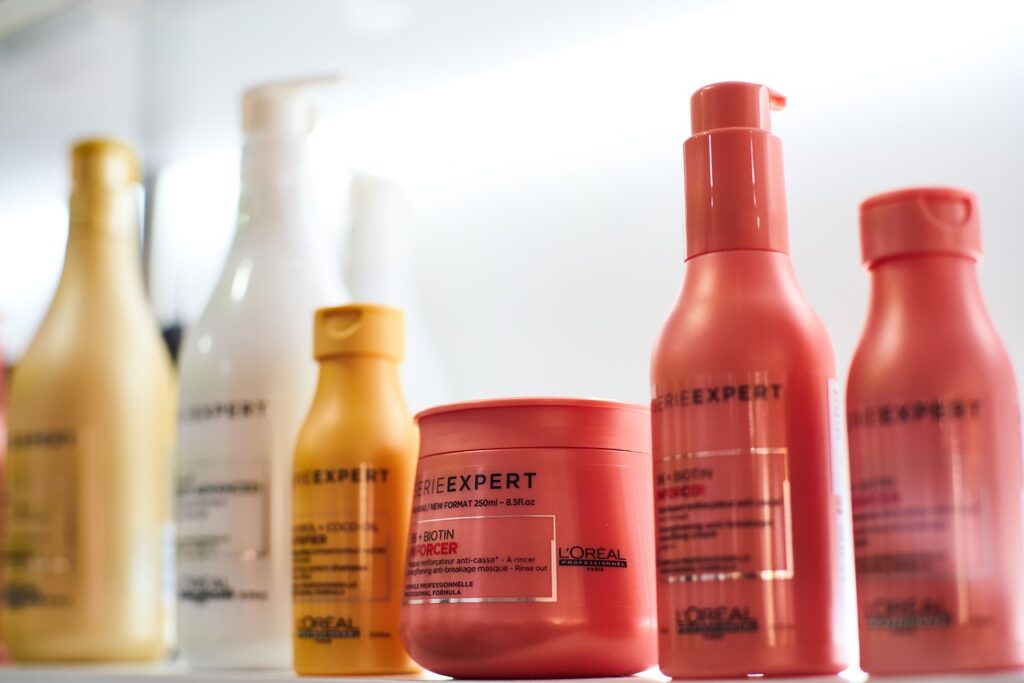How to Sell Hair Products: A Complete Guide

How to Sell Hair Products: A Complete Guide
Introduction
Breaking into the hair product market can be exciting but competitive. Whether you’re creating a line of organic shampoos, hair oils, or styling tools, there’s a big market for innovative, quality hair products.
By the end of this article, you will be able to build a successful strategy to sell hair products effectively and stand out.
Understand Your Market and Niche
Before diving into the hair section of the beauty industry, these are two things to take into consideration:
Identify Your Audience: Are your products best for natural hair, curly hair, straight hair, or specific concerns like hair growth or damage repair? The hair care market has various segments, and knowing your target audience will help shape your branding, pricing, and marketing.
Analyze Competitors: Research top brands and identify gaps in the market. Study their product lines, marketing strategies, and customer reviews. Understanding what others are doing, and what they might be missing, gives you a solid starting point to position your products differently.
Develop and Test Your Products
The beauty of hair products lies in the ingredients and formulation, so focus on quality and ingredients. Consumers are more interested in safe, natural ingredients, especially with organic and chemical-free options. Work with a cosmetic chemist if possible to ensure your product is both effective and safe.
Conduct thorough testing to ensure your product delivers the promised results. This might involve lab testing or partnering with a focus group to get real feedback. Quality control is critical in building trust with customers, especially if you’re entering a competitive space.
Bear in mind that the quality of your product will reflect in your customers’ results. If your product does not allow them to achieve a desired outcome, then your relevance will gradually thin out.
Choose Your Sales Channel
Sell on Your Own Website: Building your own e-commerce site gives you full control over branding, pricing, and customer experience. Platforms like Orah, Shopify or BigCommerce are user-friendly and customizable, perfect for showcasing your hair products.
Join Marketplaces: Selling on Amazon, Orah, eBay, or Walmart Marketplace allows you to reach a broad audience. Each marketplace has its own fees and rules, so understand those upfront. Amazon, for example, offers a “Beauty” category where hair products perform well.
Consider Salon and Spa Partnerships: Partnering with local salons and spas can give your brand credibility and direct access to customers. Many consumers trust their hairstylists’ product recommendations, and this could be a great way to build brand awareness.
Create Eye-Catching Product Listings
Take High-Quality Photos: Good product photography is essential, especially for beauty products. Show your products from multiple angles, highlight the packaging, and add a few lifestyle shots to convey the brand vibe. If possible, include photos of the product in use for a more relatable touch, as customers would rather have a glimpse of an in-action experience.
Write Clear, Compelling Descriptions: A good product description highlights the benefits, key ingredients, and unique qualities of your product. Focus on how your hair products solve common hair issues or improve hair health—help potential buyers understand why they need your product.
Add Customer Reviews and Testimonials: Reviews add social proof and build trust. If you’re just starting, you can send samples to friends, family, or influencers in exchange for honest feedback that you can display on your site.
Focus on Branding and Packaging
Develop a Strong Brand Identity: Your branding, from logo to color scheme, should reflect your target market and product qualities. For instance, natural hair products often go with eco-friendly packaging and earthy colors, while high-end styling products might feature minimalist designs, so choose wisely.
Invest in Eye-Catching Packaging: Your packaging should be durable, attractive, and reflect your brand values. Eco-conscious buyers appreciate sustainable packaging, while a vibrant design might attract younger customers. Good packaging makes a strong first impression and encourages your customers to come back for more.
Market Your Hair Products Effectively
Use Social Media to Build Traffic: Platforms like Instagram, Facebook, TikTok, and YouTube are powerful for hair care products because they’re visual and have active beauty communities. Share tips, styling tutorials, before-and-after transformations, and product launch updates.
Collaborate with Influencers: Many influencers focus on beauty and hair care. Partnering with influencers who have followers in your target market can bring visibility and build trust. Whether they review or demonstrate your product, their endorsement can push sales.
Email Marketing for Repeat Sales: With email marketing, you can keep past customers updated on new products, sales, and promotions. Regular newsletters with hair care tips, styling guides, or exclusive discounts keep your brand at the top of their mind.
Offer Promotions and Discounts
Launch with Special Discounts: Initial discounts or introductory offers can draw in first-time buyers. For instance, offering 20% off for the first purchase can encourage new customers to try your product.
Consider Bundling: Offer bundles like shampoo and conditioner together or a full hair care set. This will boost sales per transaction and introduce customers to more of your product range.
Loyalty Programs for Repeat Customers: Once you start gaining regular customers, a loyalty or rewards program can help retain them. Offer points for every purchase, which can later be redeemed for discounts or free products. This keeps your brand in their regular routine.
Provide Excellent Customer Service
Respond Quickly to Customer Inquiries: Answer questions about ingredients, product usage, and shipping times as quickly as possible. Positive interactions can make customers more likely to buy, and a good experience will often lead to referrals, as they leave you feeling satisfied.
Handle Returns and Issues Gracefully: Things like damaged packages or dissatisfaction happen. Handle these situations professionally to keep customers happy and to show that you stand by your product. Providing a replacement or refund can actually build loyalty much faster than you think.
Collect Feedback and Improve
Encourage Honest Reviews: After purchase, ask customers to leave reviews. This feedback helps others considering your products and gives you ideas on how to improve or tweak your formulas.
Learn from Customer Feedback: If multiple customers mention a specific issue, like a scent being too strong, consider adjusting your formulation. Continuous improvement shows customers that you care about their experience and are committed to offering the best products.
Expand Your Business
Expand Your Product Line: Once you have a loyal customer base, consider expanding to complementary products. If you started with hair oils, you might add shampoos, conditioners, or styling creams.
Invest in Paid Advertising: Once you’ve seen organic growth, consider investing in paid ads on Google or social media. Paid ads can be a great way to reach a larger audience and bring in more sales.
Track Performance and Adjust Strategies: Use analytics tools to track sales trends, website traffic, and customer demographics.
Conclusion
Selling hair products online can be rewarding if you approach it with the right strategy and persistence. By focusing on high-quality products, appealing branding, and connecting directly with your audience, you can carve out a space in the competitive beauty market. Keep learning and adapting, and you’ll be well on your way to building a successful hair care brand, even in the midst of the traffic in the haircare market.






Responses